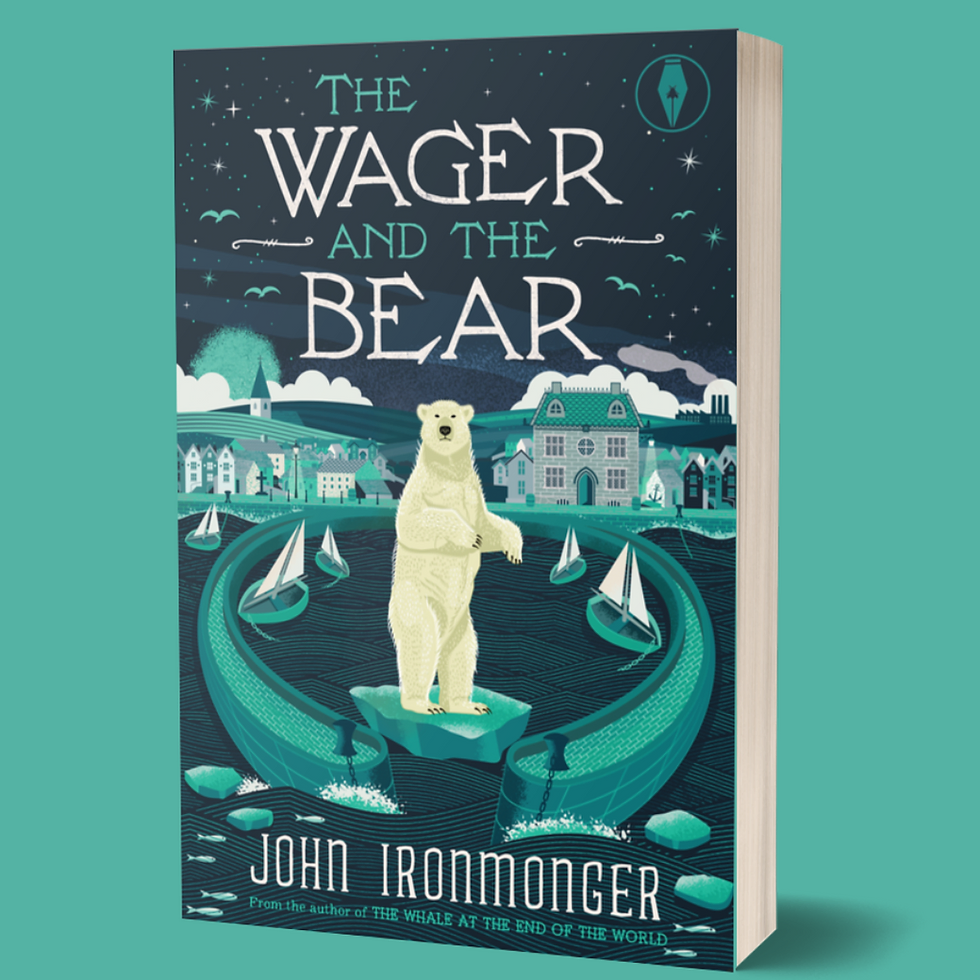A Cornish Ecothriller: two adversaries thrown together by a deadly climate wager

John Ironmonger | The Wager and the Bear | Fly on the Wall Press: £11:99
Reviewed by Paul Knowles and Samantha Cassells
John Ironmonger’s The Wager and the Bear is a hugely ambitious novel: mixing philosophy, politics and climate change together in an eco-thriller that poses as many questions as it answers. Ironmonger needs to be applauded for writing a novel that directly grapples with the nuances, difficulties and challenges posed by climate apathy and inaction in an increasingly precarious world. Set predominately in Cornwall, the novel brings to life the small fishing harbour of St Piran. Ironmonger captures the past of St Piran in his depictions of its once thriving fishing industry and its present guise as a tourist hotspot, asking difficult questions about its future as it deals with the increasing threat from an acceleration in coastal erosion. Some of our favourite passages in the whole novel are Ironmonger’s wonderful rich descriptions of St Piran’s streets, locals, and way of life.
The narrative of the story revolves around two men who represent opposing stances on climate change in modern society. Firstly, Monty Causley — local career politician, climate denier, and occasional visitor to his inherited home in St Piran. Secondly, Tom Horsmith — grew up living with his nan in St Piran, well known to everybody, occasional fisherman and studying climate science in London. Fate throws these two men together, one mid-summer’s evening when Tom rattles Monty with an ill-thought-out barb. What follows is a tense argument about climate change leading to a reckless wager where both men agree to sit in Monty’s house in fifty years’ time; Tom insists it will be underwater and Monty will drown. Monty rubbishes these claims as climate science gone mad and insists Tom drown himself if his claims are unfounded. Benny, Tom’s best friend, captures this argument on video, and posts it online. Predictably, the video is an overnight viral sensation and immediately starts to overshadow both men’s lives.
In the following years, Tom falls in love with Lykke, an Innuit climate activist from Greenland. This romance leads him to become a climate researcher in the arctic circle, a father of twins, and a supporting voice of the 1820 initiative — a quest to return the planet back to how it was before the industrial revolution and urbanisation. Monty spends many years in the political wilderness trying to forget the video and wager, until a new prime minister (and old political ally) challenges him to be the new minister of climate. Monty finds himself desperately seeking out Tom to have the same argument again — in a more grown-up fashion — in the vain hope he’ll be seen in a more favourable light with the general public. This second meeting between the two men is poignantly tragic, and results in their lives becoming inextricably entwined. Ironmonger, by tracking the two men’s lives through the novel, captures the wisdom of aging and how high ideals become tempered with loss, realism, and the bitterness of one’s limitations.
The strength of The Wager and The Bear is its ability to escape the utopianism of climate activism and the cynicism of climate apathy/denial. Ironmonger finds the right balance between the two, exploring the working practicalities of climate policy, the importance of political messaging, the need for stories to inspire and most importantly the need to be aware of the environmental destruction humans are causing. Ironmonger’s novel avoids sentimental preaching and self-aware smugness, instead choosing the power of fiction to imagine how policies and activism could operate in the near future whilst also simultaneously envisioning how climate change could alter the planet over the next century. A key strength of The Wager and The Bear is that it makes tangible how carbon sequestration, marine and forest preservation, the 1820 initiative, and rewilding could become essential methods of climate mitigation in the next fifty years. The novel suggests that humans ignoring climate change is like a frog boiling slowly in a pot of water. This is a powerful analogy for society’s current apathy towards global warming and environmental degradation. Ironmonger’s writing makes this phenomenon brilliantly visible.
After reading this novel, we could not stop asking ourselves why so many people willingly turn a blind eye to the environmental degradation that Ironmonger’s writing makes so visceral. It is a testament to the power of the novel that a couple of weeks afterwards we are still discussing the challenges and questions it poses. Ironmonger has produced one of the essential climate novels of the last decade. The Wager and the Bear is a story that challenges, entertains, and questions.
Reviewed by Paul Knowles and Samantha Cassells
